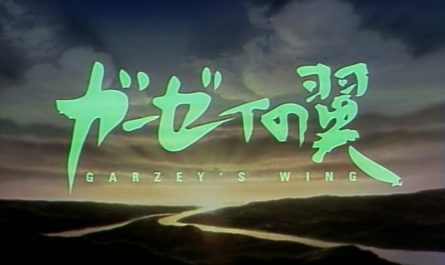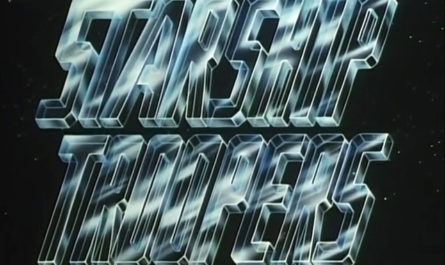
It was a balmy 70-degree December night in the city of Miami. Normally, the Orange Bowl would have been quiet on a Monday, but not that night. With the undulating roar of an ecstatic crowd, the lights shone brightly and filled the night sky. If you were looking over the city, the Orange Bowl was the brightest thing there. The PA was blaring Phil Collins, and if you looked carefully enough you could have seen Don Johnson on one of the sidelines. As the players ran out, with teal on their jerseys and confidence in their hearts, they knew their opponent was a tough one. Probably the best team in pro football, the Chicago Bears were 12-0, but Miami had the best quarterback and two of the best receivers in the game. As the Miami players ran out onto the field with the cheerleaders in their big hair and big pom-poms saluting them on, it seemed like it was going to be magical.
But enough about one of the greatest Monday Night Football games ever. Let’s talk about Zambot 3!

If only they knew what dangers awaited them.
Zambot 3 was the second Giant Robot show director Yoshiyuki Tomino made, and was the first independent show Sunrise ever produced, and as such holds an important place in Giant Mech history. It doesn’t stand out for its mecha design, but for its story elements and how those were handled. You see, Zambot 3 is an early example of deconstruction, and in many ways is the spiritual predecessor to the show which would make Tomino famous a million times over: Mobile Suit Gundam. However, its airing sits far enough back (1977-78) to feature elements of “super robot” shows.
Even though I didn’t watch the series in one sitting or a couple of weeks, this has been spread over the span of a couple of years, to be honest, this honestly gets a solid recommendation. It’s a show with unique story elements and great action. It’s not perfect, and sometimes the deconstruction doesn’t inherently work because of the super robot elements, but the willingness to bring the ideas to the table and their attempts to make them work is noteworthy.

You never saw this on Superfriends.
The premise is pure super robot: Kappei Jin is an 8-year-old delinquent in constant conflict with his rival Kouzuki and is fighting him when the pier they’re on is destroyed by alien invaders. Everything seems lost, until he discovers his grandparents and his family are alien survivors from a destroyed planet named Beal, who escaped to Earth, and are in additional conflict with the Gaizok, the evil invaders. Thus, Kappei and his cousins Uchuta and Keiko must pilot a giant robot to defeat the Gaizok and their evil monster of the week: the Mecha Boosts.
So far, so good. However, Tomino starts tightening the screws immediately. Not only are these eight-year old kids fighting to save Earth, they’re forced into fighting the aliens. Kappei only wants to beat Kouzuki and doesn’t realize the implications at first. And with Tomino in the driver’s seat, all the traditional elements of super robot shows are taken in hand and broken.

Sometimes, the points are made pretty obvious.
Here are some examples:
- A hot-blooded pilot? Sure! Let’s put him in the real world and be surprised when nobody likes him.
- Those destroyed cities? They stay destroyed. The citizens aren’t happy about it, don’t want to rebuild, and blame the Jins and Zambot 3. And they feel this way for the right reasons!
- An unstoppable enemy we know and fear? Nope, we only see the main villain four times in the entire series. The enemy we do see is the main villain’s lackey.
- Universal support for their efforts? The Jins have problems getting people on their side, and only get the government on their side by rescuing the Japanese Prime Minister, whilst failing to rescue everyone.
- Everyone is safe? Oh no, not even close.
Right away, it’s clear Tomino is not messing around, and it’s clear this isn’t a super robot show at heart.

The show has a problem with contrasting elements which work and those that don’t: take for example, this scene of civilians fleeing their homes. If you know your history, it’s not subtle what Tomino is referencing.
Still, the show has problems with the tone. I’m not really a fan of the villains. For this kind of real robot-esque deconstruction to really work, both sides either need to be portrayed evenly, or the main lackey be someone the audience can like and can even sympathize with. Suffice to say, the main lackey “Killer the Butcher” (I know, I know) seems to have gotten a lot of his ideas of being evil from Hedonism-Bot. I get Tomino’s idea for deconstruction for this character, but it doesn’t stick the landing.

Contrast those scenes of civilians fleeing with the villain playing Pachinko. Suffice to say, it’s occasionally maddening.
For starters, he looks like he has genital warts on his face. He doesn’t look human, so there’s this lack of sympathy factor. Even when he’s shown being evil, it’s contrasted by something completely ridiculous, which undercuts his villainy. Let’s look at episode 10. He captures a group of politicians, and how does he decide to kill them? Poisoning, firing squad, launching them into space? Nope, he ties balloons to them, throws them off a balcony, and shoots the balloons. Wait, what? That’s simultaneously very evil and ridiculous, and it’s this clash of tones which is both very frustrating and fascinating. To put it in another way, it seems like the Jin family and the Earth citizens are coming from a realistic robot script, but the Gaizoks come from a super robot script.

Here he is, Mr. Venereal Disease of 1977. Runner-Up: John Holmes.
Problems aside, it did hold my interest, and the series really became legendary around episode 16 because of a curveball Tomino threw which is both ridiculous and horrifying. The Gaizoks have been “losing” and decide their solution to solve those problems are human bombs. They place bombs inside certain people without their knowledge. They then explode and cause massive casualties. This is horrifying, and the show takes advantage of the drama involving the human bombs. A girl Kappei likes becomes one, and you don’t have to be a fortune-teller to know where this was going. Earlier I described it as Tomino tightening the screws. By the time the bombs were introduced, the screws were at their tightest. The audience also find out about the refugee camps for the citizens displaced by the fighting, which have been hijacked into direct pipelines for human bombs.

Hiroyuki Imaishi.
Episode 21-23 is a three-part finale. Instead of taking place on Earth, they’re fighting the Gaizok in space. This really is “Gundam 0.5”. The following three episodes are tragic, action packed, and filled with enough plot for Tomino to be daring you to catch up.
It’s filled with sacrifice, drama, character revelations, and great robot fights. I’d say more, but so much of the finale is firmly in spoiler territory, even decades later. Then again, there is a reason he was called “Kill ‘em All” Tomino, so make of that what you will.
So, if Zambot 3 had those elements which would make Gundam a success, why did it fail? A lack of a following, mostly. In 1977, there was only one magazine talking about anime in Japan, and Animage magazine (the first true magazine about anime) wouldn’t start publishing until July 1978- about four months after the show ended- so by missing that window, it didn’t gain more than a cult following.
Zambot 3 was the spiritual predecessor of Gundam, with similar traits that made the latter so loved. It has deeper themes, a more realistic take on giant robots when this wasn’t a common trend, characters which make the show great, and all in a super robot wrapper. Despite my issues with the villains, I’d love to see more people watching this show.

We’ll Meet Again…
Oh, to wrap up the opening, The Dolphins wound up beating the Bears 38-24, and the Bears finished 15-1, and won the Super Bowl. So, there you go.
Pros
- – The deconstructionist story beats give you interesting characters, character development, and crazy plot twists.
- – The final three episodes form one of the first true gut-punch endings in anime.
- – The mixing of “super robot” setup with “realistic robot” execution was revolutionary and would set the template for later in Tomino’s career.
- – The show’s obscure enough to use as a hipster anime pick, for your friends.
Cons
- – The recurring, main villain isn’t appropriate for the tone of the story.
- – The series has a dour tone that can turn people off.
- – Sometimes the deconstructionist beats miss, and the contrast is jarring.


